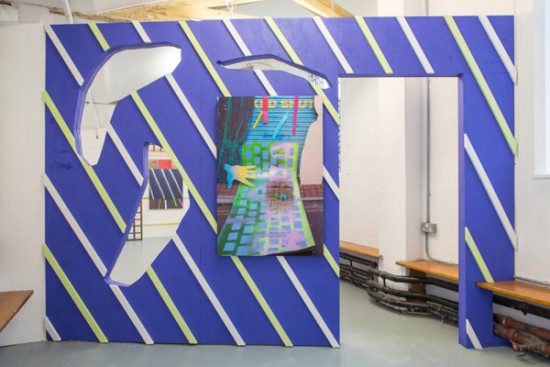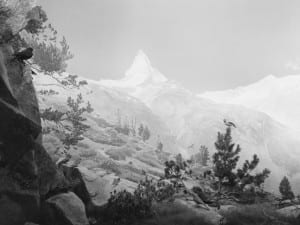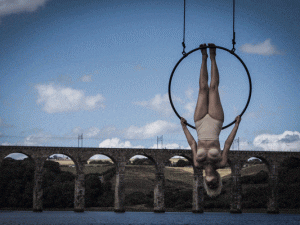Flore Nové-Josserand creates visually captivating installations. She draws upon the histories and the forms of painting, design and architecture to produce surprising pieces that combine a number of decorative modes and artistic concepts. In April her art was part of Zabludowicz Collection Invites series. She speaks to us about her interest in London’s housing problem and her plans for 2015.
A: Your work recently appeared in the Zabludowicz Collection Invites series. What drew you to working with the gallery?
FNJ: I first became involved with Zabludowicz Collection in 2013, when they invited me to take part in their first Testing Ground Masterclass workshop for emerging artists. What struck me then was how open the curatorial team was to experimenting with formats and genuinely supporting art in various ways. I was impressed. Plus, the building is inspirational and they work with good artists. I would say however, that there are tough questions about patronage, power relationships, personal/collective responsibility and ethics when working with a private collection such as Zabludowicz Collection, to which I have no satisfactory answers. What I can say is that everyone on the Zabludowicz Colllection team have shown a rare commitment and it has been a pleasure to work with them. That is important.
A: We see a lot of imagery concerning fencing and boarded up windows in your latest work, does this reflect the area in South London where you work or are you presenting city life more universally?
FNJ: I’ve moved recently, to a new neighbourhood. So I’ve been spending a lot of time looking at what’s around me; what’s on the way between my house and my studio. What strikes me is the number of boarded up properties that I see and the number of condemned or closed off spaces. That’s very much linked to gentrification and the privatisation of space. In Streatham, where my studio is, small shops and large halls are being “acquired for development”, which for the time being creates this decrepit, shut down, non-space. Brockley, where I live now, is a quiet, residential area with rows of semi-detached houses each with their own little front concrete “garden”, fenced off with some kind of decorative trellis or brick wall – it says: “Keep out! This space is mine”. I think there is a formal beauty in rough geometry. These walls and fences become large, casual, abstract surfaces that suck the whole city into a dance of pattern and rhythm. Utilitarian space becomes non-space and then maybe it can become a potential space, an aesthetic space, before it is repurposed into something definitively functional. This cycle is universal across urban landscapes, I think. The crisis of affordable space and the selling off of public space is very much in my mind at present. It is more specific to London, or certain parts of London, although it has echoes in many places.
A: The inclusion of hands coming into the frames on your work offers a direction for the piece – do you want to dictate the visitors’ gaze on your pieces?
FNJ: I try to compose my work in such a way as to prompt the viewer to move in a voyage of discovery and surprise, whether that be the movement of their eye in the image-space or their body in the physical space. I use various devices to achieve this, from the use of screens with apertures, to colour, lighting, and pointing hands. In figurative painting, the directed glance and the pointing hand are really major tools to direct the viewer’s gaze. I try to avoid using faces in my work, because it’s hard for them not to become the main focus. But using hands is an effective way to direct attention and also to bring to mind the body, as a subject, as an object, as an active and sentient entity.
A: One of your recent curatorial projects was the WAï which led discussions on current artistic issues. Does your speculation on these issues feed into your work?
FNJ: Yes, in a general sense. I am interested in many questions at once, and the WAï (Workshop for Artistic Investigation) allows me to consider and discuss particular topics together with other artists and practitioners. Last summer, I spent a week with Chooc Ly Tan, Gareth Bell-Jones, Oliver Braid and Linda Franke (and some outside help) considering whether material artefacts are appropriate tools in our quest for transcendence. It’s a heavy topic and my intention is not to achieve scientific or philosophical conclusions, but rather to approach the question as an artist, allowing for free speculation, experiments and failure. I think it’s very important for artists to have a space to discuss ideas together, with a set starting point but no defined outcomes. Having said that, this time the WAï residency will have an outcome-object, which will be a website. The format and content of this website is something that we have arrived at collectively, during and post-residency. It’s interesting for me to use different formats to address artistic questions, such as a workshop, public talk or exhibition, because format and content are so intertwined. The way speculation on specific issues feeds into my work is complex and mysterious. I think of all of these platforms as my work.
A: What other exhibitions or projects of yours can we look forward to in 2015?
FNJ: In September I will have a solo show at Eastside Projects in Birmingham, which is going to be part of a bigger show about display. In November I am co-curating a show with Thorbjørn Andersen called The Casual Gesture, at Standpoint Gallery, London. It’s about a particular attitude that artists might use to create work, rather than focusing on medium or theme. There are some really good artists involved. In the next few months, Chooc Ly Tan and I will be publishing the website-object from the last WAï residency, made in collaboration with our guest residents.
Find out more about her exhibition at Zabludowicz Collection at www.zabludowiczcollection.com.
Credits
1. Flatland 5, 2015. Photographic print (unique) + plywood board, and ad hoc framing wall. Photo: Tim Bowditch.




